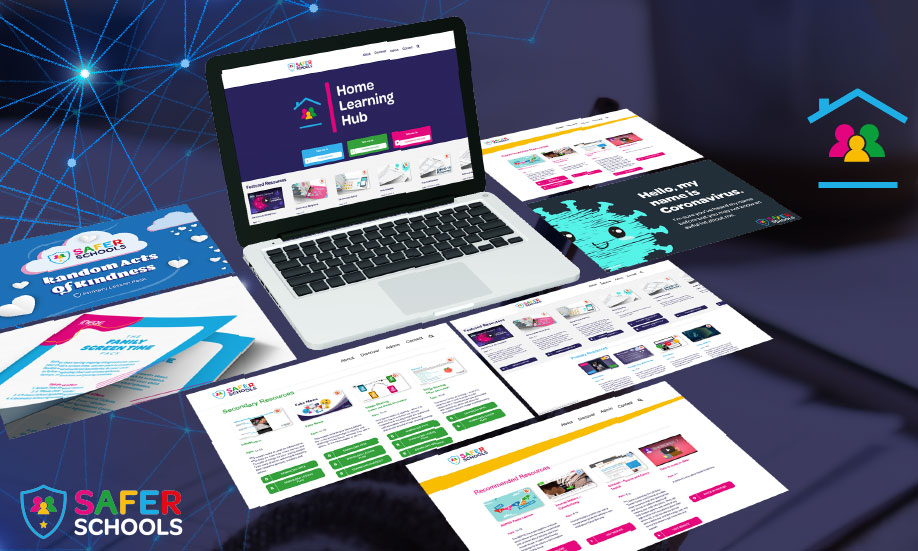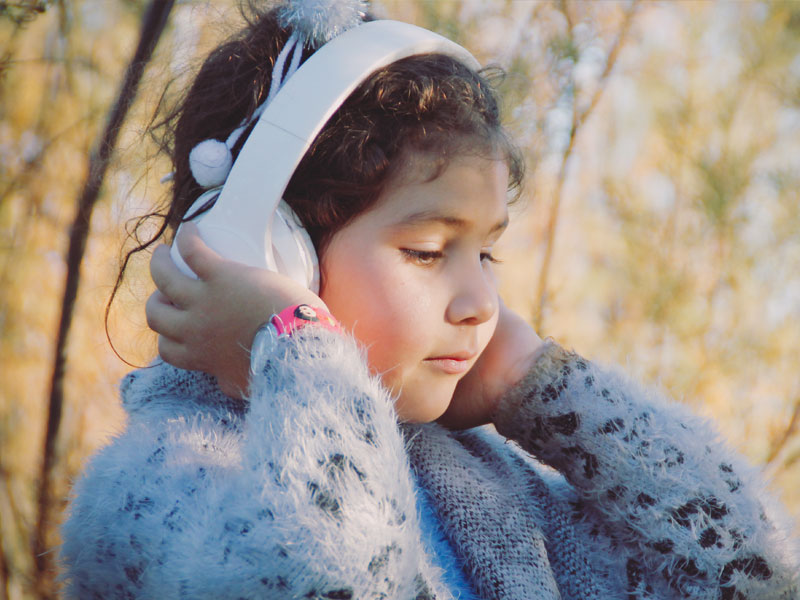Read the script below
Hello and welcome to Safeguarding Soundbites. This is the podcast that brings you all this week’s safeguarding news and alerts.
Now, this week, we’re bringing something a little different. With Halloween coming up and the inevitable rise of horror genre, we’re getting you up to speed with how to keep the children and young people in your care safer.
Let’s call this episode… Handle with Scare.
Today’s children and young people are engaging with content that would have seemed unbelievable when their parents were their age.
And that can make it difficult for their parents and carers to decide what is ‘age appropriate’ and what is not. This is especially true for horror, a popular genre that uses the shocking and the scary to impact its viewers.
As always, here at Safer Schools, we like to find out what this horror genre looks like in the digital world, as well as the risks parents, carers, and safeguarding professionals should be aware of.
Keep listening, if you dare…
So what exactly is the horror genre?
The horror genre is a style of entertainment that is designed to shock, scare, and provoke its audience. It can be split into various sub-genres (such as gothic, paranormal, and slasher) but the aim is almost always the same – to frighten its audience. There are multiple forms horror can appear in, such as:
Films – movies like The Conjuring, which was recently added to Netflix ahead of the Halloween season.
Series – TV programs such as The Twilight Zone, The Haunting of Hill House or you might remember the sense of panic that accompanied Squid Games when it first became popular.
Games –video games, like Poppy Playtime or more recently, we’re seeing an increase in popularity of Five Nights at Freddies – which we’ll talk about a little bit later in this episode.
It can also be stories or literature– urban myths and legends like Slender Man.
And certainly popular at the moment are Horror Experiences – interactive walkthroughs such as a haunted house or virtual reality.
Important Note: a lot of media found within horror is rated for a more mature, adult audience. Even something meant for younger audiences that is ‘inspired by’ this source material could include themes or situations that may be inappropriate for young people.
Let’s talk about ‘Stranger Things’
Have you heard of Five Nights at Freddy’s?
Well, this horror video game has been popular with children despite having an age rating of 10. The game follows the plot of five young children mysteriously disappear in 1985, causing Freddy Fazbear’s Pizza to shutter its doors forever. The latest Five Nights at Freddy’s movie has been classified 15 by the British Board of Film Classification (BBFC) for “strong threat, violence”. However, some parents may be concerned about the potential risks of allowing their children to watch the film, even if they are over the age of 15.
The reasons for this include:
Violence and gore: The film is said to contain scenes of animatronics attacking and killing humans. This could be upsetting or disturbing for young children, even if they are fans of the video games.
Horror elements: Scary elements such as jump scares, suspenseful music, and dark and atmospheric imagery.
Thematic material: The film also deals with some mature themes, such as death, grief, and trauma. This could be difficult for young children to understand or process.
If you are considering allowing your child to watch the latest Five Nights at Freddy’s movie or play the game, it is important to weigh up the potential risks and benefits.
Talk to your child about the film and its content before they watch it. Explain that it is a horror film and that it contains violence and gore.
Watch the film with your child so that you can support them and answer any questions they may have.
Be aware of the signs of distress in your child, such as nightmares, difficulty sleeping, or changes in behaviour. If you are concerned about your child’s reaction to the film, talk to them about it and seek professional help if necessary.
We’ll touch on some more of these tips towards the end of the podcast.
Now if you choose not to let your child watch the move or play the game, it’s important to mention that is extremely easy to find related content on most online platforms – even with parental controls enabled. Some of this content can be disturbing if a child is not expecting it or if they are more vulnerable to this genre.
It is up to parents and carers to decide whether something is appropriate for their children to watch. But bare in mind that content from the show is easily accessible through platforms like YouTube, TikTok, where other users are posting reaction videos or clips from episodes. On Twitch and Discord, users may find videos or livestreams of games. Even gaming creation systems like Roblox allow users to create their own games based on characters and situations found in horror, especially as something becomes popular – we expect to say many of these kinds of games popping up on Roblox as the Five Nights at Freddy’s movie launches.
This is exactly what we saw with Squid Games. Young children being aware of specific scenes or themes within the show, not from watching it, but from viewing the content on other social media platforms.
Why is horror appealing to children and young people?
Younger audiences may find the appeal is directly tied to things like…
The thrill of danger – Children and young people can say they were brave enough to play, watch, or read the piece and survive to the end. This can inspire a game of “chicken” in which others can feel a compulsive need to show they are not a coward by also engaging with it.
It’s about their peers – Groups of friends may interact with this content collectively for enjoyment or for ‘dares’. There is also a high-level of community involvement around horror, which can make someone feel like they are a part of something if they are isolated or lonely.
A sense of urgency is often associated with horror genre– The heightened anxiety that comes with engagement, such as the feeling of being chased or watched, makes players want to solve the mystery or get to the end that much faster. The scarier the character or threat, the more satisfying it is to complete or ‘conquer’ it.
Breaking the rules – If young children or teenagers feel they shouldn’t play or watch something, chances are they will want to do it even more. They may also experience a ‘fear of missing out’ if all their friends are talking about it, which could encourage them to seek it out.
Red Flags
Every child is different. Some may genuinely enjoy horror and not struggle with any lasting feelings of fear or panic in response. Many of these characters (e.g. Slender Man, Eleven, Squid Game guards) have even become popular Halloween or fancy dress costume choices for children. However, if a child is worried or anxious after engaging with horror, they may be:
DISTRACTED – Find it hard to focus or concentrate on normal tasks.
WITHDRAWN – Appear quieter, lonelier, or ‘zoned out’.
UNINTERESTED – Experience a sudden change in appetite or favourite past times.
TIRED – Due to sleep disturbances (i.e. bed wetting, restlessness) or nightmares.
EMOTIONAL – Exhibit angry, irritable, or teary behaviours.
NERVOUS – This can physically manifest in fidgeting, tummy aches, or headaches.
FEARFUL – React nervously or claim to have new fears of places or situations.
If your child is exhibiting these behaviours, it does not mean that they are reacting to something scary. However, if the child in your care comes across something scary or disturbing online, encourage them to:
STOP
what they are doing and turn off their screen/switch off device
PAUSE
to take a breath and try to stay calm
THINK
about something else that makes them happy
TALK
to an adult they trust about what they saw and how it made them feel
Top Tips
Reassure your child that they are safe. Repeating that reassurance in different environments may be necessary if your child seems fixated on their fear. It may be helpful to remind them that horror characters like Slender Man are simply stories intended to frighten. Remind them that it’s okay to be afraid, and that they are not alone.
Discuss permissions with your child. Ultimately, you know your child best. If they ask you to watch or play something that might be scary, consider each child on an individual level. It might be appropriate for them to engage. It could even be best for you to watch/play whatever it is together to ensure they don’t become overwhelmed.
Be ready to talk (if they need to). It’s important your child knows they can come and speak to you without fear of judgement or consequence. If necessary, ask them to show or tell you what they have found, and follow appropriate reporting procedures on platforms if you are concerned.
Remind them who is on their side. Use our Trusted Adult Resources to teach children and young people about the importance of seeking help from trusted people if something worries or upset them. Even if it isn’t you, the most important thing is ensuring those in your care are protected from harm. They may choose to share with you further down the line!
Don’t minimise how they’re feeling. If your child is having nightmares or is anxious about something they’ve watched, acknowledge their feelings and have a conversation about how they can express them in a healthy way. You can use our emotions journal to help your child describe complex emotions such as fear or worry in a way that is not overwhelming to them.
Check in with other parents. If you want to know what your young person’s friends are watching, connecting with their parents will help you find an answer quietly. It might also help you decide on what horror to allow those in your care to engage with!
Well I hope you’ve enjoyed today’s episode, and you can find a bitesized version of our advice in our Handle with Scare shareable available on our website and our range of safeguarding apps.
We’ll be back next week with another episode of Safeguarding Soundbites. Until then, have a spooktacular week and stay safe!
Join our Online Safeguarding Hub Newsletter Network
Members of our network receive weekly updates on the trends, risks and threats to children and young people online.
Pause, Think and Plan

Visit the Home Learning Hub!
The Home Learning Hub is our free library of resources to support parents and carers who are taking the time to help their children be safer online.









